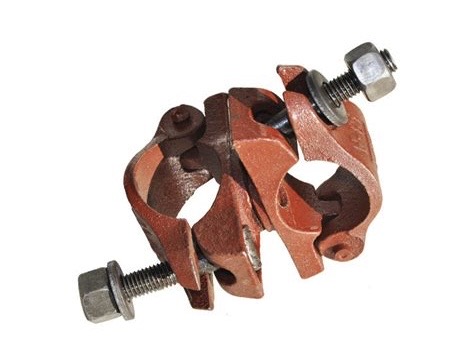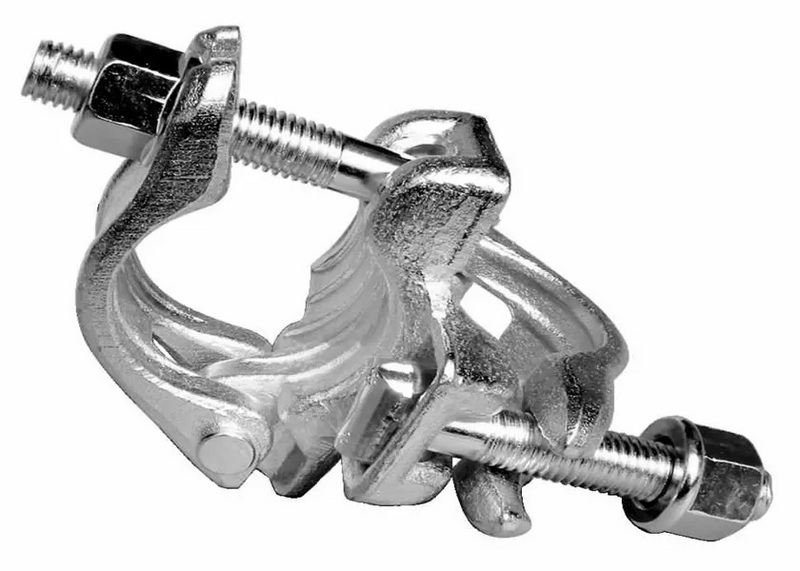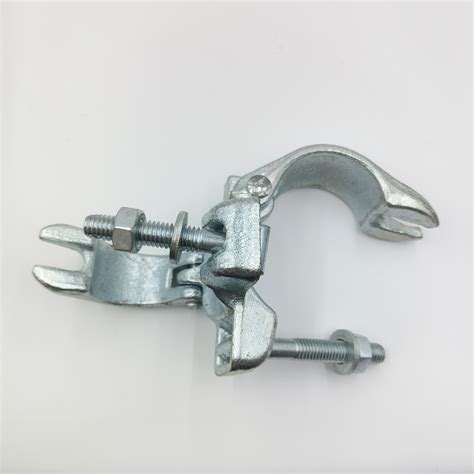Selecting the appropriate scaffolding double coupler is crucial for ensuring the safety, stability, and durability of any scaffolding structure. One of the most important factors influencing this choice is the scaffolding double coupler weight, which directly relates to its strength, load capacity, and suitability for different scaffolding applications. This comprehensive article will guide you through understanding the significance of coupler weight, types of double couplers, their load capacities, materials, and how to select the right one based on your project's weight requirements.

What Is a Scaffolding Double Coupler?
A scaffolding double coupler is a mechanical fitting used to join two scaffold tubes at right angles (90 degrees) in tube-and-coupler scaffolding systems. It is essential for creating rigid and stable scaffold frameworks by connecting vertical standards to horizontal ledgers or transoms.
Double couplers are sometimes called right-angle couplers or fixed couplers and are fundamental in scaffolding construction.
Importance of Scaffolding Double Coupler Weight
The weight of a scaffolding double coupler is a key indicator of its material quality, robustness, and load-bearing capacity. Heavier couplers typically indicate:
- Use of stronger, thicker materials such as forged steel.
- Higher load capacity and resistance to bending or failure.
- Greater durability and longer service life.
- Increased safety margin under heavy loads.
However, heavier couplers may also add to the overall scaffold weight, affecting transport and assembly effort.
Types of Scaffolding Double Couplers and Their Weights
1. Forged Double Couplers
- Weight: Approximately 1.0 to 1.45 kg (2.2 to 3.2 lbs) depending on design and standard.
- Material: Drop-forged steel, often hot-dip galvanized for corrosion resistance.
- Features: High strength, excellent durability, preferred for heavy-duty scaffolding.
- Examples: British BS1139 forged double coupler weighs about 1.05 kg; German and Australian types can weigh up to 1.45 kg.
2. Pressed Steel Double Couplers
- Weight: Around 0.85 to 1.0 kg (1.9 to 2.2 lbs).
- Material: Pressed or stamped steel, zinc-plated or galvanized.
- Features: Lighter than forged couplers but less robust; suitable for lighter scaffolding.
3. Lightweight or Aluminum Double Couplers
- Weight: Varies, generally lighter than steel couplers.
- Material: Aluminum or aluminum alloys.
- Features: Used where weight reduction is critical; lower load capacity compared to steel.
Load Capacity and Weight Relationship
The load capacity of a double coupler is closely related to its weight and material properties.
- Typical forged steel double couplers meet EN74 Class B standards, supporting loads exceeding 30 kN (approximately 3,000 kg or 6,700 lbs).
- Pressed steel couplers support slightly lower loads but still meet safety standards.
- Lighter aluminum couplers have reduced load capacity and are used in specific applications.

Factors to Consider When Choosing a Double Coupler Based on Weight
1. Project Load Requirements
- Calculate the maximum expected load on the scaffold, including workers, materials, and equipment.
- Choose a coupler with a load capacity exceeding the maximum load with an appropriate safety factor.
2. Scaffold Type and Configuration
- Heavy-duty industrial scaffolds require forged, heavier couplers.
- Light commercial or residential scaffolds may use pressed steel or lighter couplers.
3. Environmental Conditions
- Corrosive environments (marine, chemical plants) require galvanized or stainless steel couplers, which may be heavier.
- Indoor or dry environments allow for lighter options.
4. Regulatory Compliance
- Ensure couplers comply with local standards such as OSHA, EN74, BS1139, or AS1576.
- Heavier couplers often have certifications indicating higher safety margins.
5. Handling and Logistics
- Consider the impact of coupler weight on transport, assembly time, and labor.
- Balance strength needs with practical handling concerns.
Material and Finishing Impact on Weight and Performance
- Galvanized Steel: Adds weight but provides excellent corrosion resistance.
- Zinc Plated Steel: Lighter coating, less corrosion protection.
- Aluminum: Lightweight but lower strength.
- Stainless Steel: Heavy and corrosion-resistant, used for specialized applications.
Installation and Maintenance Tips
- Use proper tools to tighten couplers to recommended torque (typically 54 Nm).
- Regularly inspect couplers for wear, corrosion, or damage.
- Replace couplers showing deformation or cracks immediately.
- Store couplers in dry conditions to prevent rusting.
Conclusion
Choosing the right scaffolding double coupler based on weight is essential for ensuring scaffold safety and performance. Heavier forged steel couplers provide superior strength and durability, suitable for demanding industrial applications. Lighter pressed steel or aluminum couplers may be appropriate for lighter scaffolding but come with reduced load capacity. Always consider project requirements, environmental factors, and regulatory standards when selecting couplers. Proper installation and maintenance further ensure scaffold integrity and worker safety.

FAQ
1. How much does a typical scaffolding double coupler weigh?
Most forged steel double couplers weigh between 1.0 and 1.45 kg (2.2 to 3.2 lbs), while pressed steel types are lighter, around 0.85 to 1.0 kg.
2. What load capacity corresponds to a 1.0 kg double coupler?
A 1.0 kg forged steel double coupler typically supports loads exceeding 30 kN (approx. 3,000 kg or 6,700 lbs) per EN74 Class B standards.
3. Can I use aluminum double couplers for heavy scaffolding?
Aluminum couplers are lighter but generally have lower load capacities and are not recommended for heavy-duty scaffolding.
4. How does coupler weight affect scaffold assembly?
Heavier couplers increase scaffold stability but may require more labor effort and affect transport logistics.
5. Are all double couplers corrosion-resistant?
Most high-quality double couplers are galvanized or coated for corrosion resistance, but untreated steel couplers can rust and weaken over time.






















